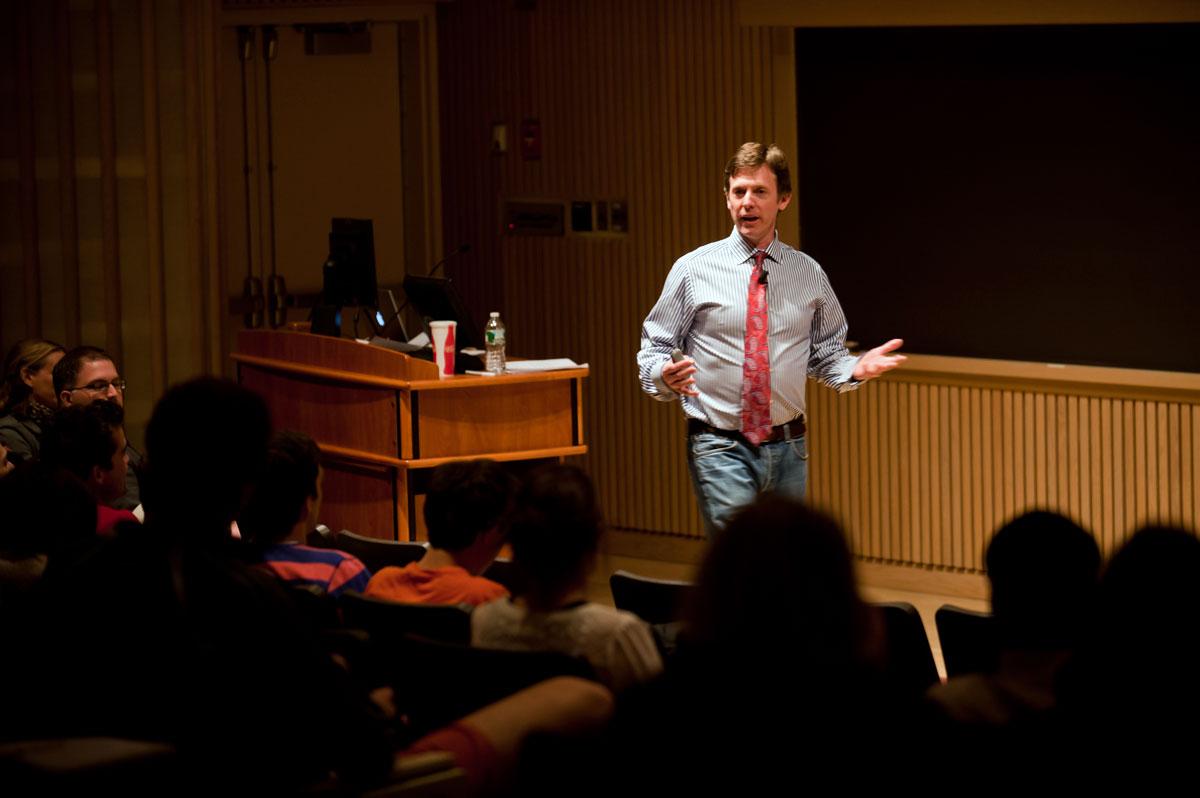Running up and down the aisles of Love Auditorium on Tuesday night, Erik Stolhanske ‘91 began his inspirational lecture like a basketball star, giving out high fives to students on the ends of each aisle.
Stolhanske founded Charred Goosebeak, the campus improv group, with some friends who would later go on to form the successful comedy team Broken Lizard.

Eric Stolhanske '91 talks to students Tuesday night at Love Auditorium. (Photo by Janna Minehart '13)
His lecture, though, was not about how to write a successful movie or how to be funny, but rather about his struggles in overcoming his disability.
Stolhanske was born without a fibula and has a prosthetic leg. His lecture began with childhood pictures of his wooden leg from when he was about 8 years old. He joked with the crowd that he “was like a tree, you could measure my growth by the rings around my ankle.”
His humor kept the audience captivated, but so did his poignant story about what it was like to grow up with a disability, including anecdotes about the dangers of playing kickball in grade school and the lies he told about how he lost his leg to girls at Colgate.
After having to give up his dream of playing baseball at Colgate he discovered a passion for acting. He and Jay Chandrasekhar, Kevin Heffernan, Steve Lemme, and Paul Soter formed Charred Goosebeak and after graduation moved to New York City to try and make it big as Broken Lizard.
It was not an easy path, but their film Super Troopers, which premiered at the 2001 Sundance Film Festival and was released worldwide in 2002, became a cult hit and kick-started their careers. Without his “foolish perseverance, irrational determination, and sheer delusion,” Stolhanske does not believe he would have ever made it to where he is today.
He told the audience that his advice for life is to take chances and not let your own personal “wooden leg” keep your dreams in check. In lieu of following the motto, “the grass is always greener,” he urged students to “jump that fence, check it out, and see what the grass is like.”
